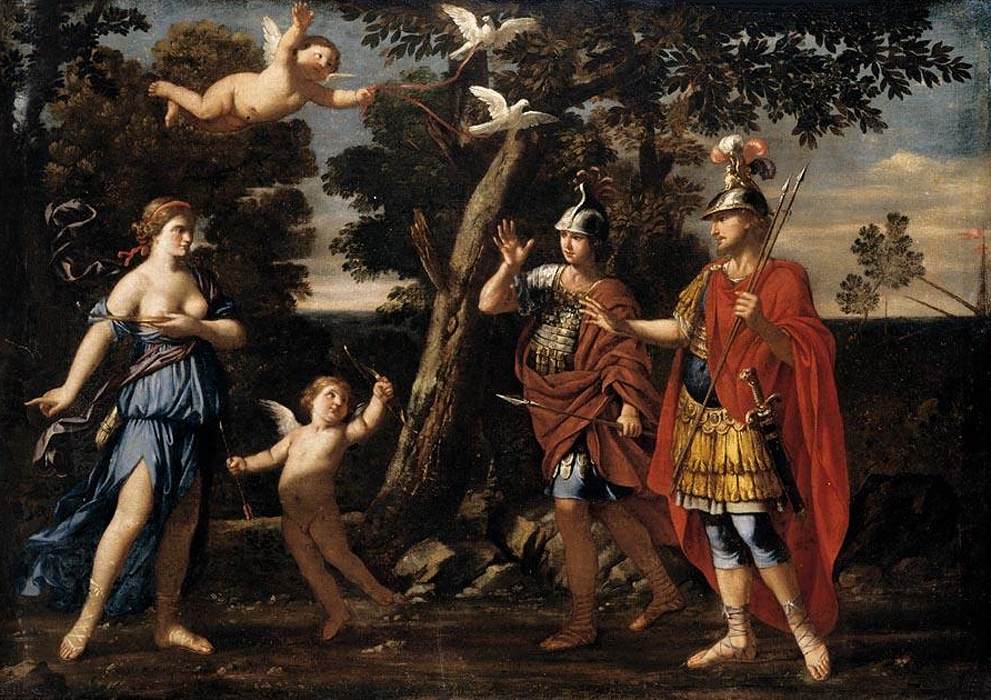Description
The painting Venus Appearing to Aeneas and Achates by the Italian artist Giacinto Gimignani is an impressive work that represents a key moment in the history of Roman mythology. The painting, which has an original size of 122 x 170 cm, shows Venus, the goddess of love and beauty, appearing before Aeneas and Achates, the heroes of Virgil's epic The Aeneid.
The artistic style of the painting is Baroque, which is evident in the drama and intensity of the scene, as well as in the use of chiaroscuro to create effects of light and shadow. The composition of the work is very careful, with a disposition of the figures that guides the viewer's gaze towards the center of the scene, where Venus is located. The figure of the goddess is depicted majestically and elegantly, with an idealized beauty that reflects her divine status.
Color is another interesting aspect of painting. Gimignani uses a rich and vibrant palette, with warm, saturated tones that create a feeling of warmth and light. Light emanating from Venus illuminates the face and figures of Aeneas and Achates, creating a dramatic lighting effect that emphasizes the importance of the goddess in the scene.
The history of the painting is also fascinating. It was commissioned by Cardinal Carlo de' Medici in the 17th century and was part of the Medici family collection in Florence. The work was later acquired by the Prado Museum in Madrid, where it is currently located.
A little-known aspect of the painting is that Gimignani was inspired by an earlier work by the French artist Nicolas Poussin, which also depicts the appearance of Venus to Aeneas. However, Gimignani added to the figure of Achates, who does not appear in Poussin's work, and created a more dynamic and dramatic composition that reflects his Baroque style.
In short, the painting Venus Appearing to Aeneas and Achates is an impressive work that combines drama, beauty and Roman mythology in a careful and vibrant composition. Its baroque style, its rich color palette and its fascinating history make it one of the most interesting works in the Museo del Prado collection.

